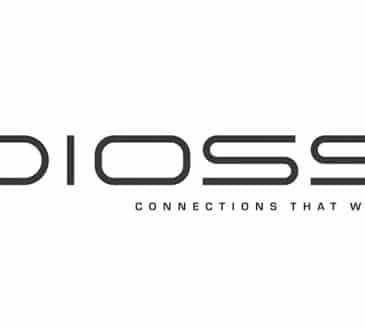Eight Tips for Optimizing Costs in IT Companies

How important is cost optimization in IT companies? Is it synonymous with resource optimization? Is it a one-time budget reduction exercise to meet the numbers? Or is it a continuous, deliberate, and implemented set of processes designed to squeeze every last penny out of every invested ruble? Does it take into account future growth, trends, and business needs, or is it focused on aligning the current budget with forecasts?
There are many different perspectives and a million different approaches to addressing these questions, so let’s start with a definition:
Cost optimization is a business-oriented, continuous discipline aimed at increasing revenue and reducing expenses while maximizing business profitability.
It includes:
- Obtaining the best prices and terms for all business and IT purchases.
- Standardizing, simplifying, and rationalizing platforms, applications, processes, and services.
- Automating and digitizing IT operations and business processes.
It is important to note possible pitfalls, primarily that “cost optimization” and “cost reduction” are not the same thing.
- Work with suppliers on pricing and conditions
Procurement departments have long focused on getting the best price for contracts, but contract terms can also help optimize costs. This includes not only payment terms or long-term contracts for profitability but also hybrid options. Training credits or on-site training, implementation support, on-site representation, and marketing collaboration can increase the value of each ruble spent on a purchase.Exercise caution when becoming too tied to a supplier through contracts with very high exit costs, long durations, or anything that implies collaboration with a competitor, as this may be a violation. Such collaborations can limit a company’s ability to test and transition to new technologies and innovations. Establish mutually beneficial relationships with suppliers to increase speed and accuracy while minimizing the risk of new implementations.
- Consolidate shared services and directions
System administration, storage, and network teams should work within a single team. This eliminates duplication of efforts, ensures operational consistency, and minimizes subsequent rework or integration.While there is a trend to consolidate support services exclusively with the product marketing groups they support, this can hinder the latter’s ability to contribute to the company as a whole. Not all resources benefit from participating in shared service teams, but there are hybrid models that can unite them into similar product groups. These groups are still part of the IT staff, but their priorities are determined by the business side.
Maintaining interaction between IT staff members while remaining part of their respective business groups allows for the exchange of ideas, knowledge, and information without compromising the support needed by business products. It also allows for better workload balance and joint implementation.
- Consolidate and standardize infrastructure
The essence of any IT cost reduction involves integration, upgrade, and modernization of hardware and software applications in whatever form they exist. Legacy systems can erode revenue on a daily basis, but transitioning to new systems that accelerate the processes they support comes with strong resistance and inherent risk.This can be particularly challenging when independent projects, different business functions, or groups are geographically distributed, potentially leading to downsizing of personnel in the company as a whole.
Modern solutions for cloud infrastructure can help overcome complexities and simplify software management and updates in three steps:
a) Implement hybrid, multi-cloud architecture to speed up processes.
b) Make the infrastructure flexible and converged.
c) Consolidate different systems for centralized control and administration.Check systems for actual usage. When it comes to software licensing, even the best pricing models can be inaccurate when workloads are combined with underutilized systems. This can be especially challenging and potentially expensive in traditional infrastructures, particularly with databases.
Implementing hyper-converged infrastructure (HCI) can minimize the resources needed to maintain computing, networking systems, and data storage. While HCI investments come with initial costs, they can significantly.
- Data Management Optimization
Data is a corporate asset that should be treated appropriately and managed effectively. Providing people across the company with the ability to leverage this data opens doors to improve business efficiency through faster and more accurate managerial decisions.When a company gains strategic insight into data and analytics, it should consider implementing the Big Data Maturity Model, which transitions from opportunistic to systematic and transformative utilization. This framework can save up to 25% of a company’s revenue.
However, achieving the highest level of maturity requires significant investments over many years. Only a few companies are considered to be in the “mature” stage of big data and analytics. These include internet companies (such as LinkedIn, Facebook, and Amazon) and other non-internet-related companies, including financial institutions (fraud analysis, customer messaging, and real-time behavior modeling).
- Digitization and Automation of Service and Support
Automate the work of business unit employees, computational resources, and any other regularly recurring processes. Digitizing internal repetitive processes allows employees to focus on more purposeful tasks, maximizing actual productivity and return on investment on a daily basis.Recent marketing research shows that by 2024, two-thirds of all customer-related projects will be using IT platforms. Supporting customers with friendly chatbots, also known as Virtual Customer Assistants (VCAs), is becoming increasingly common and can be an effective use of resources. If most support questions are repetitive and their answers are known, this process can be automated. It allows support staff to give real attention to customers facing more complex issues.
After implementing VCAs, a company can reduce phone, chat, and email inquiries by up to 70%, resulting in a 33% cost savings per voice interaction.
- Continuous Discipline
Continuous discipline in cost optimization involves collecting ideas and incorporating them into the review and implementation process in a simple and corporate culture-appropriate way. Many small cost optimization projects can be realized by hearing an employee say, “Someone needs to fix this mess.”Collecting and analyzing these suggestions within the company can provide more than just current elements for optimization. Once employees realize they can contribute to making something better, faster, and cheaper, their worldview on their work and processes within the company begins to change. This can significantly optimize expenditures on human resources.
- Focus on Cost Optimization, Not Cost Reduction
Cost reduction can have detrimental consequences for the future of a business, yielding minimal benefits from cost optimization. Reductions may lead to short-term, immediate profit growth, but the company will likely have to spend more to regain lost positions in the future.This includes retaining staff, postponing important projects, and limiting expenses on infrastructure, architecture, and process development. Be cautious with cost-cutting methods; they rarely deliver the overall benefits that businesses truly need.
- Don’t Let Costs Hinder Growth
The goal of any company is to seek growth opportunities provided by technological and informational approaches. No company should solely focus on cost optimization. Therefore, it’s best to leverage new technologies, make resource optimization part of the corporate culture, reassess existing processes and improve them, consolidate where possible, gather and analyze data from all relevant sources, and relentlessly progress on the path of digital transformation.
In conclusion, optimizing cost management and embracing digital transformation are vital for businesses to thrive in today’s competitive landscape. By efficiently managing data and leveraging analytics, companies can make faster and more accurate decisions, leading to increased efficiency and improved business outcomes.
The digitization and automation of processes not only enhance productivity but also allow employees to focus on more value-added tasks. Implementing virtual customer assistants and leveraging IT platforms for customer support can lead to significant cost savings and improved customer satisfaction. It is important to foster a culture of continuous discipline, where cost optimization ideas are collected and implemented, driving innovation and efficiency throughout the organization.
However, it’s essential to prioritize cost optimization over mere cost reduction, as indiscriminate cuts can have long-term negative impacts on a company’s growth and competitiveness. By striking a balance between optimizing costs and investing in growth opportunities, businesses can position themselves for long-term success in the digital era.
Written by Anna Bolotova.
Have you read?
Largest Hotel Chains in the World, 2023.
Best Residence by Investment Programs for 2023.
International Financial Centres Ranking, 2023.
Best Citizenship by Investment (CBI) for 2023.
The World’s Most Valuable Unicorns, 2023.
Ready to join the CEOWORLD magazine Executive Council– Find out if you are eligible to apply.
Add CEOWORLD magazine to your Google News feed.
Follow CEOWORLD magazine headlines on: Google News, LinkedIn, Twitter, and Facebook.
Copyright 2024 The CEOWORLD magazine. All rights reserved. This material (and any extract from it) must not be copied, redistributed or placed on any website, without CEOWORLD magazine' prior written consent. For media queries, please contact: info@ceoworld.biz








